This wonderful Cornish workshop and museum is dedicated to the legacy of studio pottery trailblazer Bernard Leach
The transformation of Gainsborough’s House
The transformation of Gainsborough’s House
16 Dec 2022
The one-time Suffolk home of the great 18th-century artist Thomas Gainsborough has been the subject of a £10m revival project. Caroline Wheater was there at its reopening
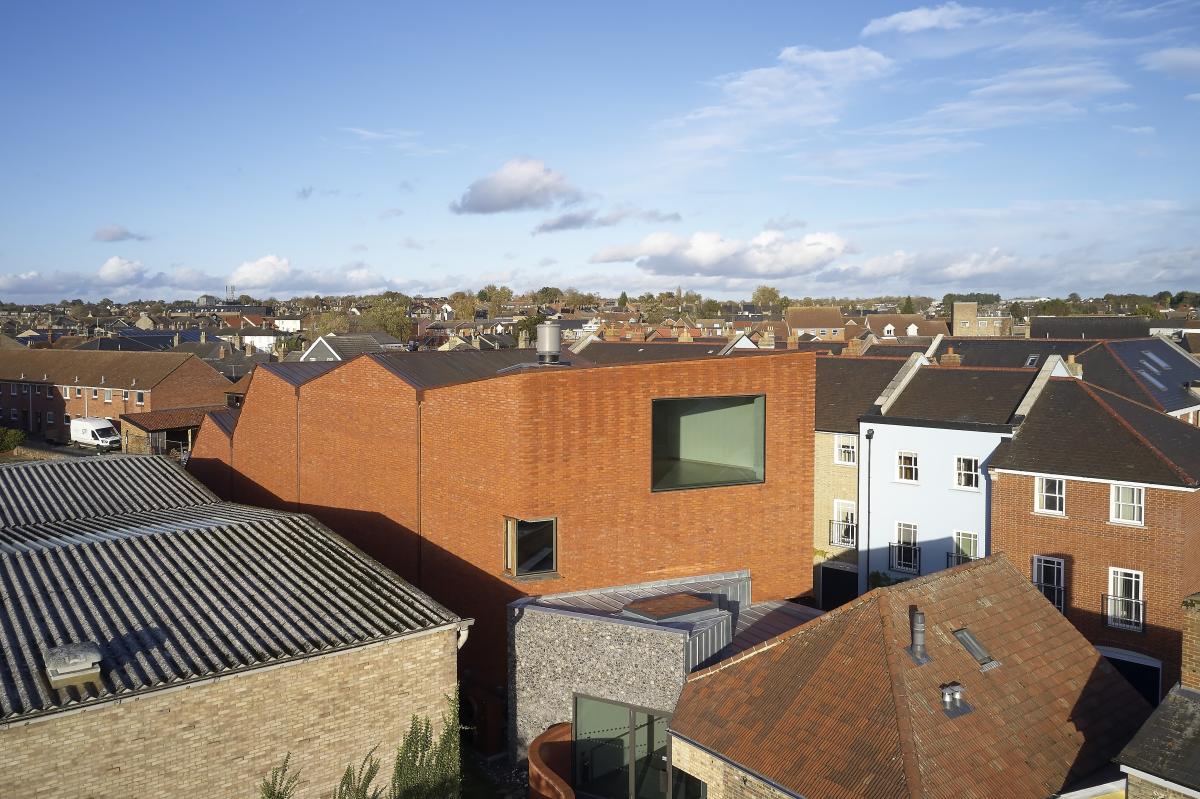 Arial view of the new building designed by ZMMA at Gainsborough’s House © Hufton+Crow
Arial view of the new building designed by ZMMA at Gainsborough’s House © Hufton+Crow
On a clear day, from the Landscape Studio at the top of the new gallery wing at Gainsborough’s House in Sudbury, you can see the distant setting for one of the artist’s most famous portraits, Mr and Mrs Andrews(c.1750). Like many of Thomas Gainsborough’s paintings, it captures not only the genteel sitters in all their finery but their land too – in this case the valley of the River Stour, where the couple owned some 3,000 acres.
The panoramic picture window at the top of the new three-storey brick and flint building reflects in microcosm the £10m transformation that Gainsborough’s House has undergone over the past four years.
The aim, in the words of director (and Arts Society Lecturer) Mark Bills, has been to make it ‘one of East Anglia’s leading exhibition venues and to open up access to the most extensive collection of work by Thomas Gainsborough anywhere in the world’. He hopes that a measure of its success will be the ongoing regeneration of Sudbury, as has happened with Turner Contemporary in Margate on the Kent coast and Tate St Ives in Cornwall.
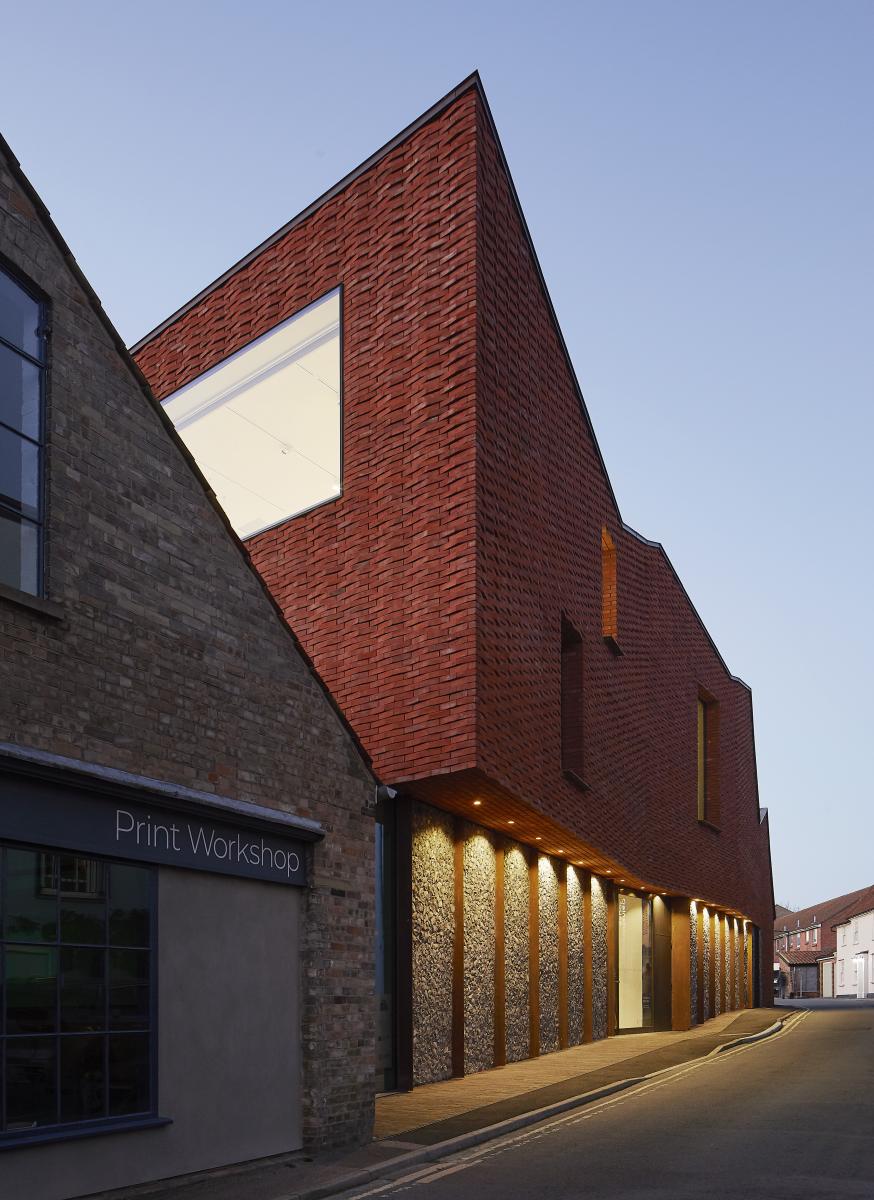 View of ZMMA’s new building at Gainsborough’s House © Hufton+Crow
View of ZMMA’s new building at Gainsborough’s House © Hufton+Crow
It’s a tall order and requires passion, a quality that lead architect Adam Zombory-Moldovan of ZMMA is not short of. For four years he and his team have worked closely with Bills, immersing themselves in Gainsborough’s world. ‘With new museum and gallery buildings, it’s crucial that you excite and inspire, creating moments such as “lifting” visitors to a view that otherwise wouldn’t have been seen. It’s been about making those links between the place, the town, Gainsborough and the landscape, creating a compelling destination for people to be among these paintings and objects.’ The connection between Gainsborough’s work and the landscape that surrounds Sudbury plays out in clever details, such as the use of clay and flint materials for the new building, gleaned directly from the Suffolk landscape.
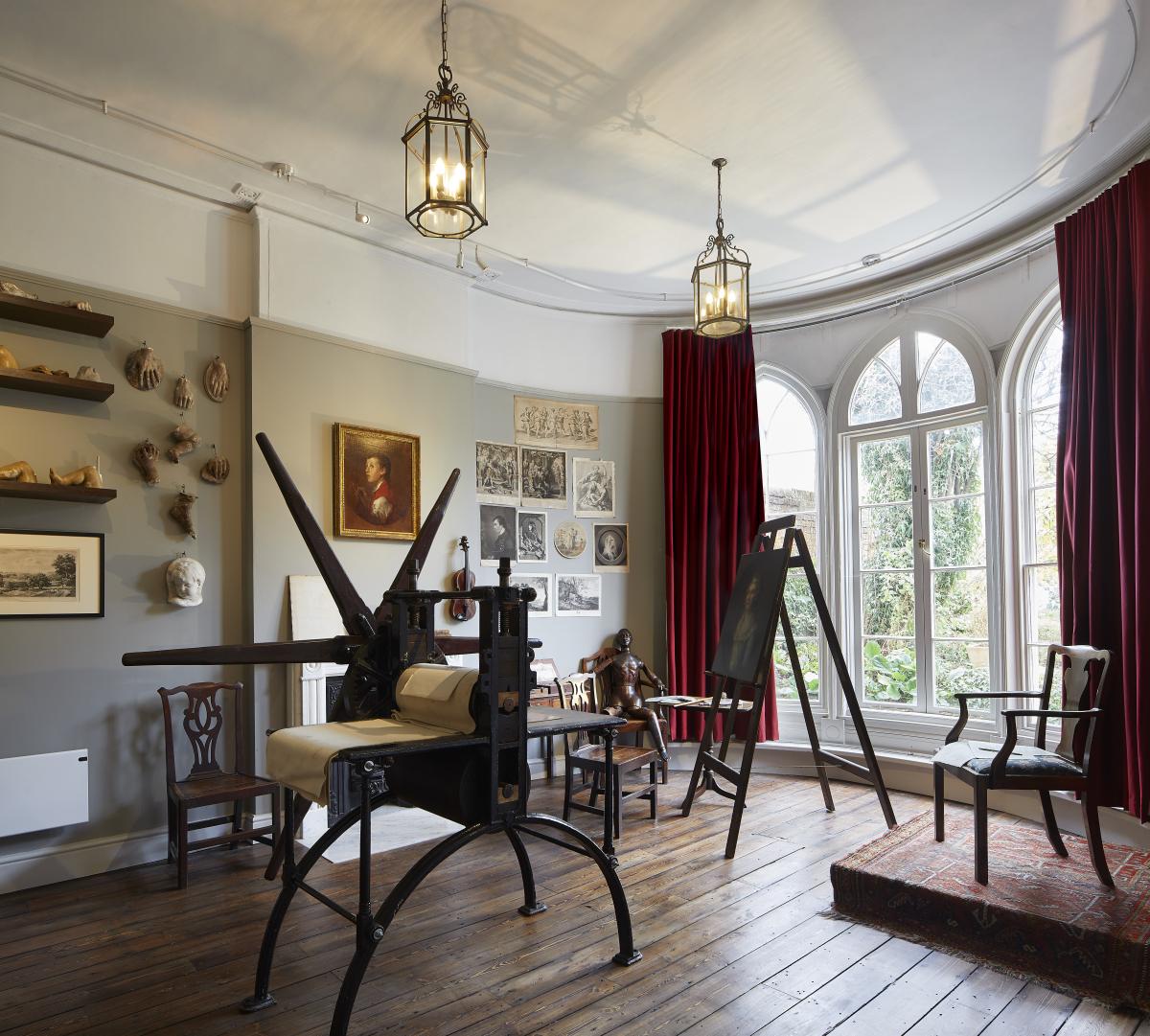 View of the Finnish Scott Painting Room at Gainsborough’s House © Hufton+Crow
View of the Finnish Scott Painting Room at Gainsborough’s House © Hufton+Crow
Additionally, a new building must complement existing historic buildings. Now Gainsborough’s childhood home, a graceful Grade I listed Georgian townhouse, sits snugly across the courtyard garden from the handsome new build, clad with its ‘woven’ brick façade and zigzag copper roof – both being nods to the town’s silk-weaving heritage. After sensitive renovation and reconfiguration by ZMMA, the ‘petite and precious’ house has been enabled to ‘breathe’ again, each room telling a story connected to the artist, from his famed love of music to the inspiration he gave John Constable and the collection of Cedric Morris paintings, all illustrated by artworks, books, letters and associated objects (and the museum is still collecting).
Once inside, it doesn’t take much imagination to spot the ghost of a young Thomas padding across the parlour and climbing the stairs to bed, or sitting beneath a 400-year-old mulberry tree in the garden, planted a century before his birth. For certain, he would have gone out to sketch the fields and woods surrounding the town as he started to evolve as an artist, becoming a favourite of King George III and high society, and a feted co-founder of the Royal Academy of Arts
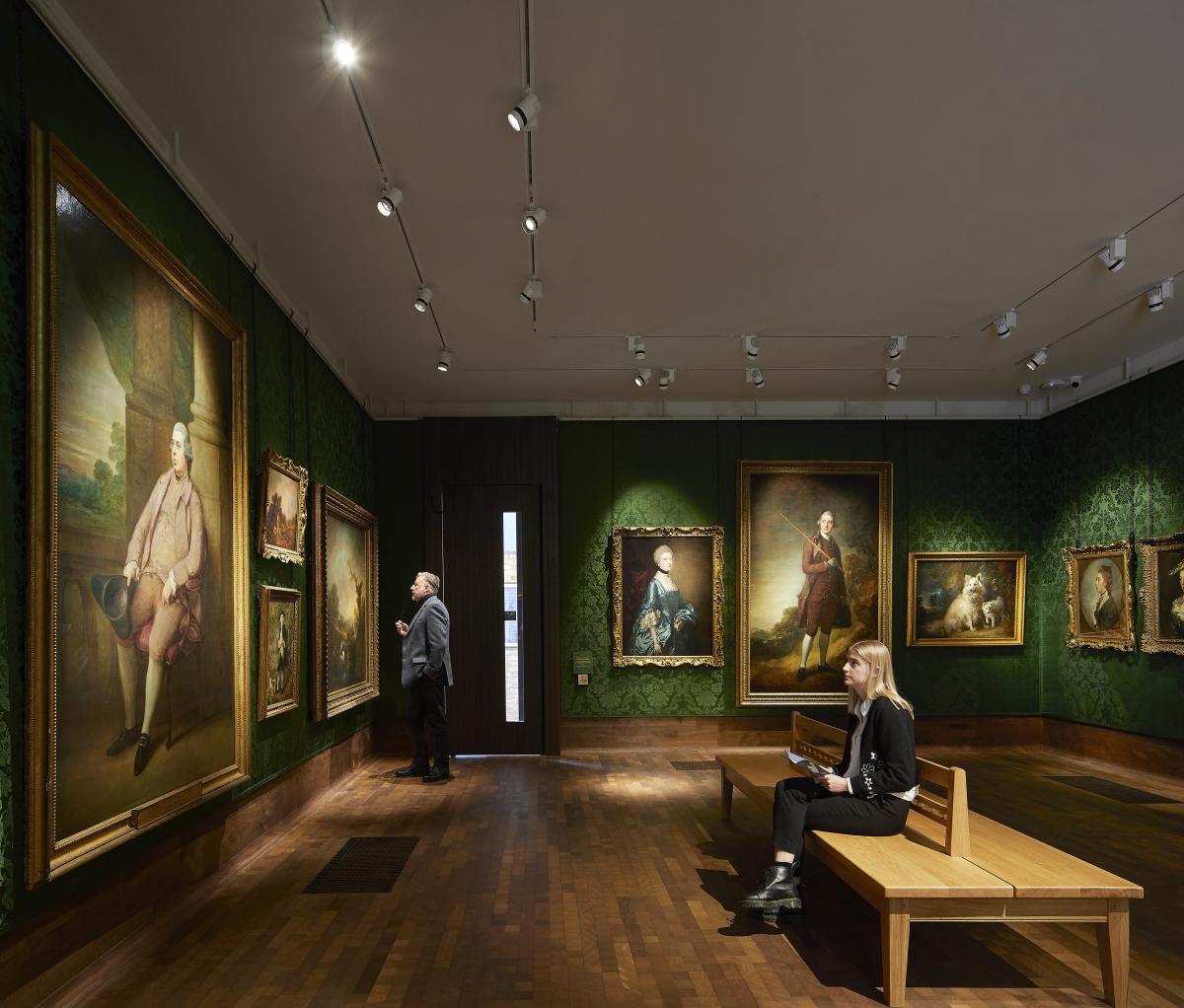 View of the new Gainsborough Gallery at Gainsborough’s House © Hufton+Crow
View of the new Gainsborough Gallery at Gainsborough’s House © Hufton+Crow
‘Gainsborough’s vision of a rustic idyll was moulded by Sudbury; it was a landscape he knew well and he loved it,’says Bills, whose mission is to do greater justice to one of our best-loved artists. ‘With support from the National Lottery Heritage Fund, the project is the most significant development in the history of the house since it became a museum in 1961. The new centre will show 40 of Gainsborough’s paintings at any one time, 20 of them in a new, silk-lined gallery.’
The bottle-green silk walls of that space are a gift from the Humphries Weaving Company, a Sudbury business that is one of the last links to the silk goods trade that thrived there in the 18th and 19th centuries. ‘It’s remarkably generous and a real sign of how the town has supported Gainsborough’s House throughout the project,’ Bills comments. The rehang of landscapes and portraits from different periods of Gainsborough’s career gives new gravitas to the gilt-framed paintings that gleam in this intimate, jewel-like setting.
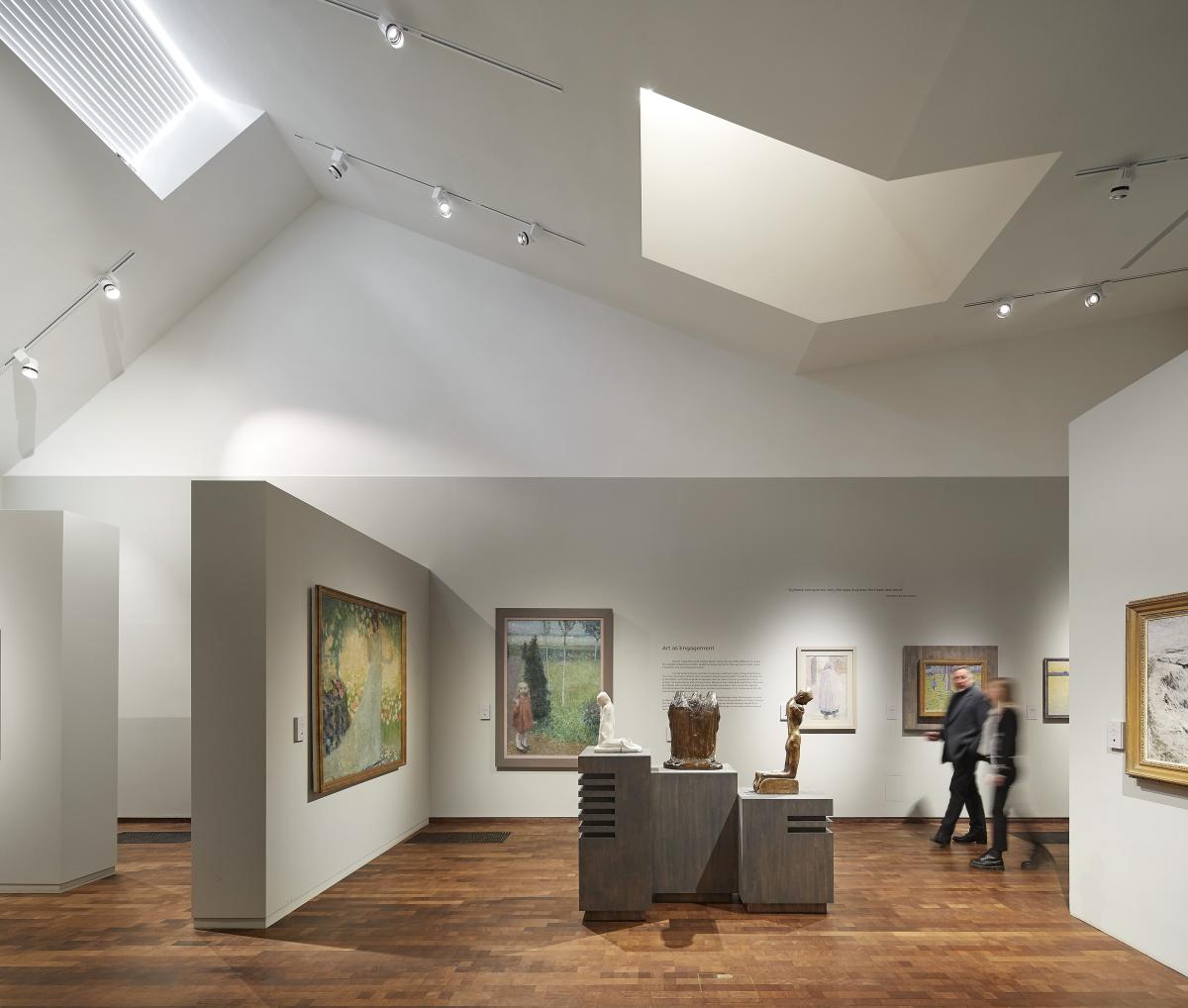 View of the temporary exhibition Painting Flanders: Flemish Art 1880–1914 © Hufton+Crow
View of the temporary exhibition Painting Flanders: Flemish Art 1880–1914 © Hufton+Crow
On a more practical note, Bills and the team plan to further serve the community by welcoming youth groups, young offenders, prisoners and their families onto education and outreach programmes held in flexible learning spaces in the new building. In addition, the new Timothy and Mary Clode Gallery and the Sudbury Gallery will mount international exhibitions, kicking off with a stylish show from Antwerp titled Painting Flanders: Flemish Art 1880–1914. ‘Our temporary shows will give us international reach,’ says Bills, determined to paint Gainsborough’s House in a whole new light.
To plan a visit
See gainsborough.org
The Watering Place café offers refreshments.
Painting Flanders: Flemish Art 1880–1914 continues until 26 February 2023.
About the author
Caroline Wheater is an arts and culture writer
JOIN OUR MAILING LIST
Become an instant expert!
Find out more about the arts by becoming a Supporter of The Arts Society.
For just £20 a year you will receive invitations to exclusive member events and courses, special offers and concessions, our regular newsletter and our beautiful arts magazine, full of news, views, events and artist profiles.
FIND YOUR NEAREST SOCIETY
MORE FEATURES
Ever wanted to write a crime novel? As Britain’s annual crime writing festival opens, we uncover some top leads
It’s just 10 days until the Summer Olympic Games open in Paris. To mark the moment, Simon Inglis reveals how art and design play a key part in this, the world’s most spectacular multi-sport competition



